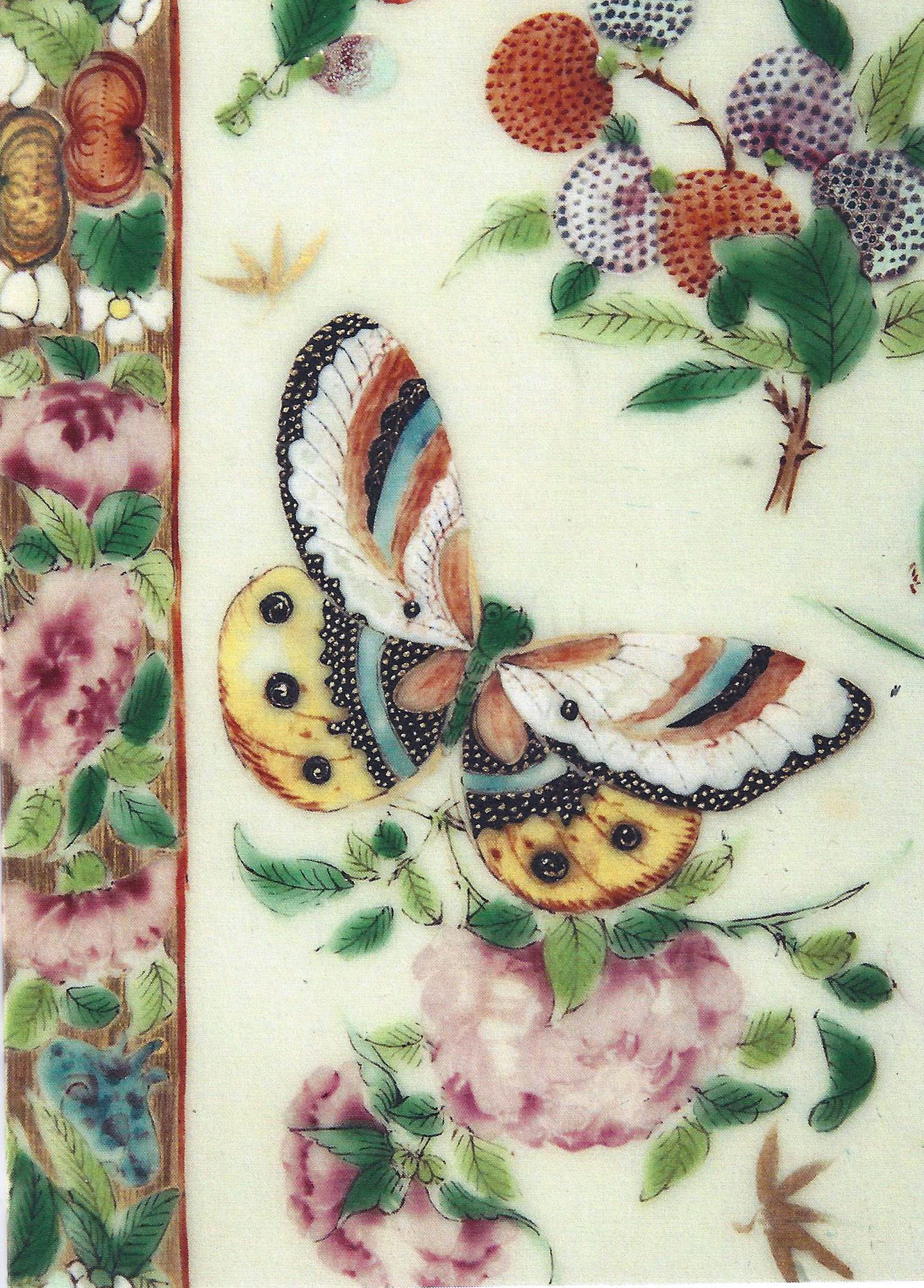
With all the barbarism we’re facing these days (the truck-ramming terror attack in New York being the latest), I find it’s good to remind ourselves of all the beauty and exquisite craftsmanship we humans can create when we’re at our best and most civilized. This image got me thinking about how much richness lies beneath the surface, and how much depth there is to everything, especially fine art, when you look a little closer and delve a little deeper. This is the cover of a note card I bought at the Binghamton University Art Museum, when my husband and I were there roaming campus during family weekend, visiting our son who’s now a freshman at Binghamton.
Oh, I thought when I bought the card, nice picture of a butterfly. My mom will like it. (She’s into butterflies.) Only on the flight home, when I rummaged through my treasures and took a closer look at the note card, did I notice that there was depth to this image. You can see that the ivory-colored areas are solid matter, not painted; there’s a shimmery solidity to that creamy white. Sure enough, when I bothered to read the back of the card, I discovered it showed a detail from a Rose Mandarin Vase from China’s Qing Dynasty (1840-60), made of porcelain with enamel.
What richness lies beneath the surface! Incidentally, we found the treasures of the Binghamton University Art Museum below the surface as well. The museum is a rather unassuming brick building kitty-corner from the bookstore, and we first viewed the main exhibit, which already was quite satisfying. But then I asked if there wasn’t another hall to the museum, and sure enough, there was. In the basement, behind boring steel doors, we found an amazing glass collection (tiny Roman vessels, for example!) and curious books, which I’ll feature soon. What incredible human artistry, craftsmanship and cultural treasures can be found, below the surface, in a small museum in Upstate New York! What depth there is to life beyond the BBQ that was happening on the lawn outside.
Marveling at my Chinese vase note card reminded me of visiting a cloisonné factory during my visit to China last year. I always wanted “to do something” with those pictures, and now that another such vase crossed my path, I am:
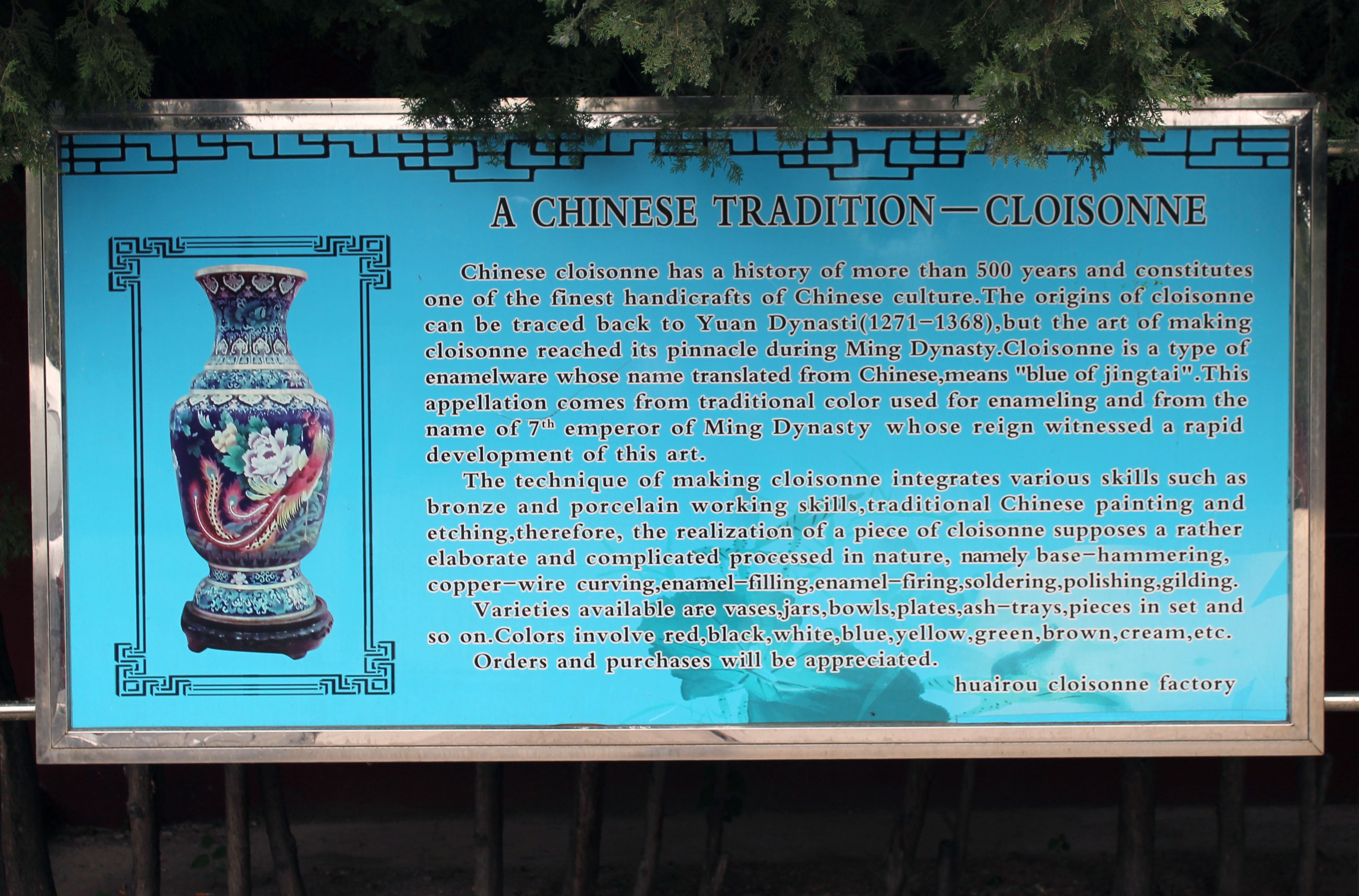
Until our tour guide asked whether we’d be interested in stopping by a cloisonné factory on our way back to Beijing from our excursion to the Great Wall of China, I had not heard of cloisonné. My grandmother (Oma in my book!) loved porcelain, and growing up I learned quite a bit from her about the different kinds of porcelain. She loved window shopping for china. But I was not familiar with cloisonné, an old technique of decorating metal objects.
Visiting this cloisonné factory was a lot like visiting an art museum somewhere in the American countryside: Riches were to be found. In this unassuming square brick building, intricate objects were being created.
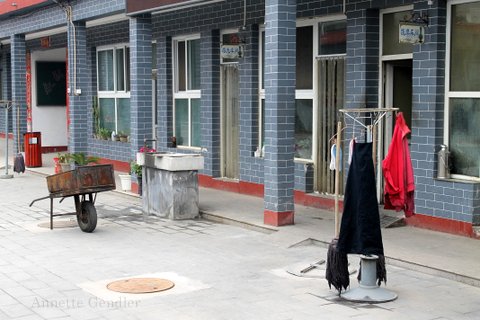
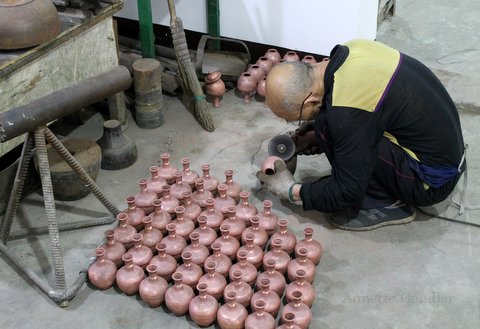
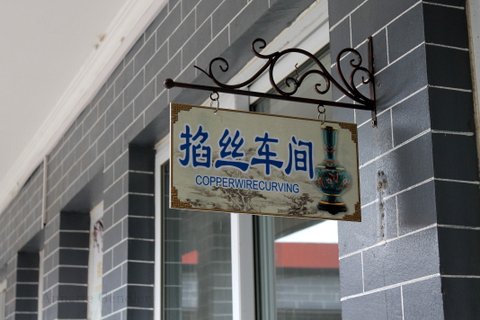
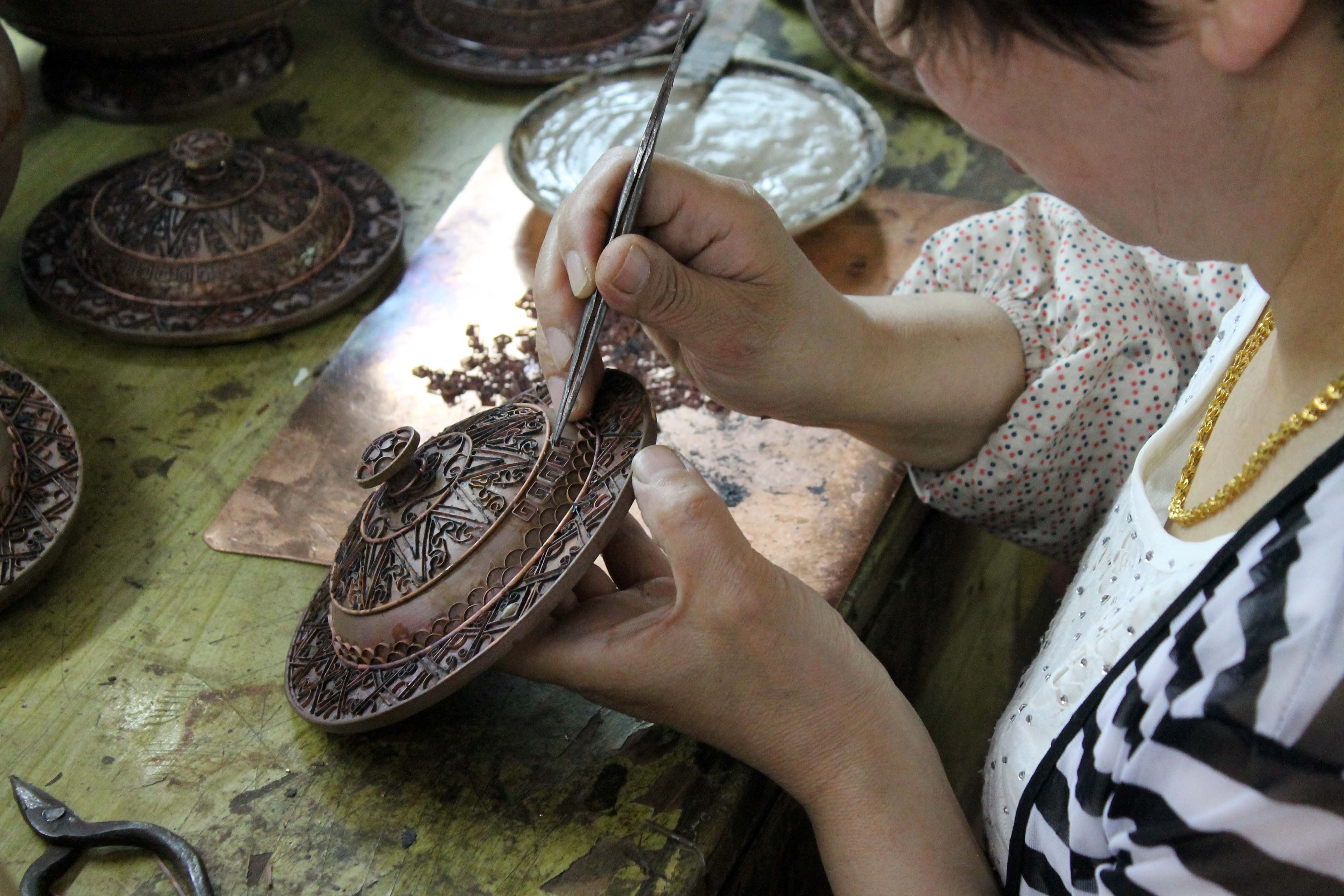
Compartments (cloisons in French) are added to the object by affixing wires or thin metal strips placed on their edges to create patterns and images.
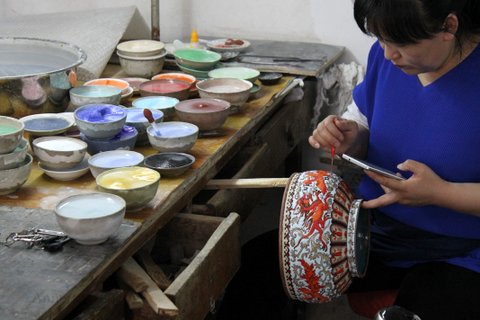
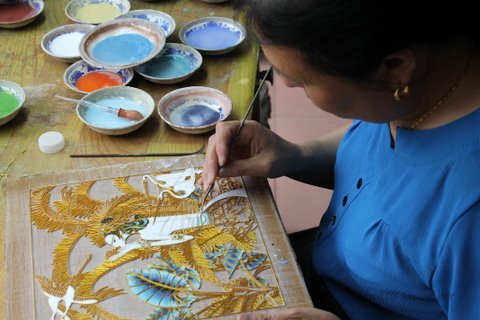
Next, colored enamel paste is applied to the compartments.
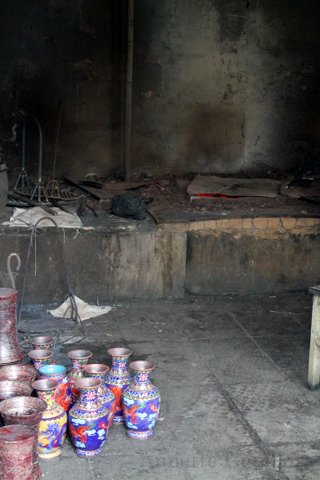
Then the vases are fired.
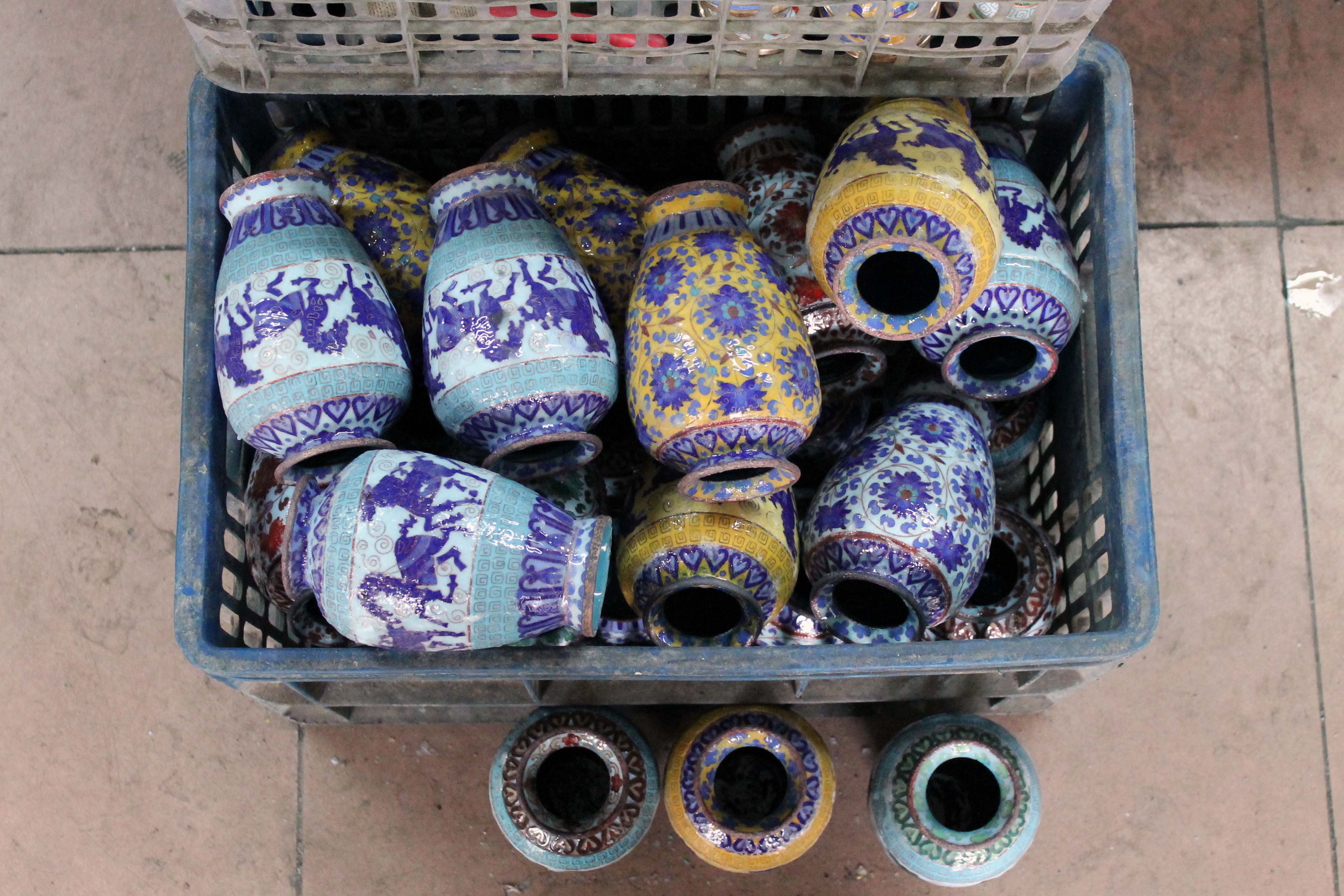
Ready for polishing
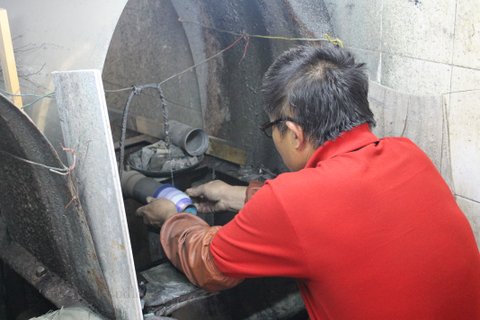
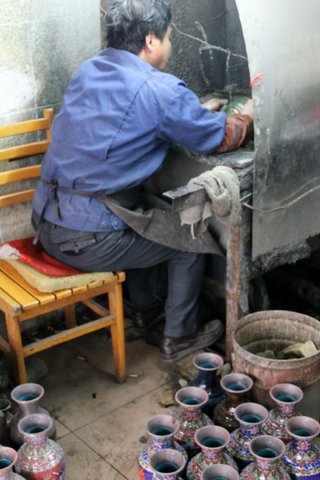
Polishing!
Incidentally, I did buy something at the cloisonné factory (which is, of course, the point of taking tourists like me around a factory like this): a butterfly for my mom… (similar to this:)
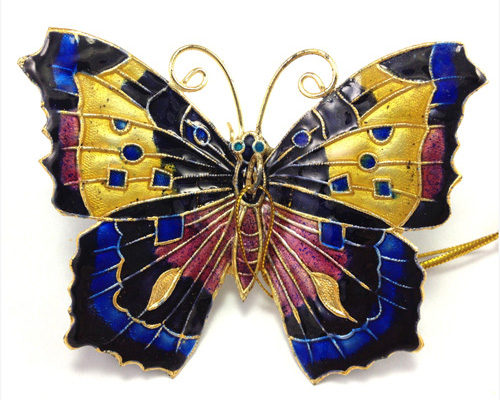

Annette, the story you have shared is amazing and the images of cloisonne that remind you of your grandmother are stunning.
Thank you Barbara, glad you enjoyed it!
An unexpected setting for such beautiful works!
Indeed, yes!
I love Cloisonné and have 2 vases prominently displayed in my office- They are quite old– I’m not exactly sure how old. What a fascinating post and refreshing to get my mind off, as you mentioned, the barbaric acts of the past few days…months…years.
On another note- CONGRATS on your book and for being a finalist in the CWA 2017 book of the year award!! I’m off to Amazon to order your book. I can’t wait to get it and read it!!
Thank you, Connie, I’m glad I hit a nerve for you with my cloisonne post and that you enjoyed it.